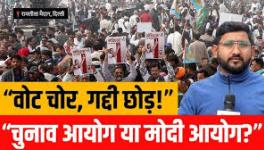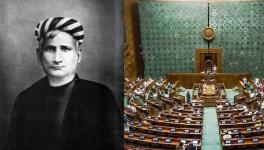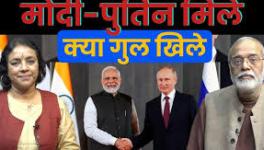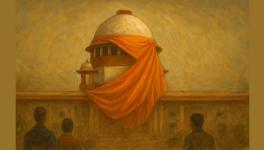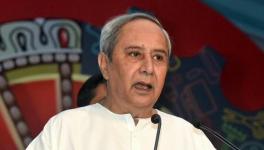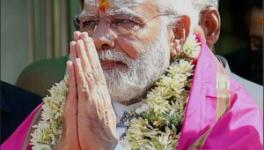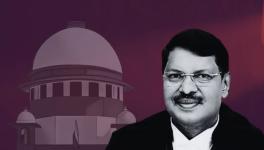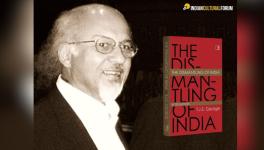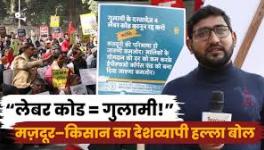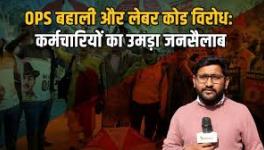Taking Another Hard Look at National Security
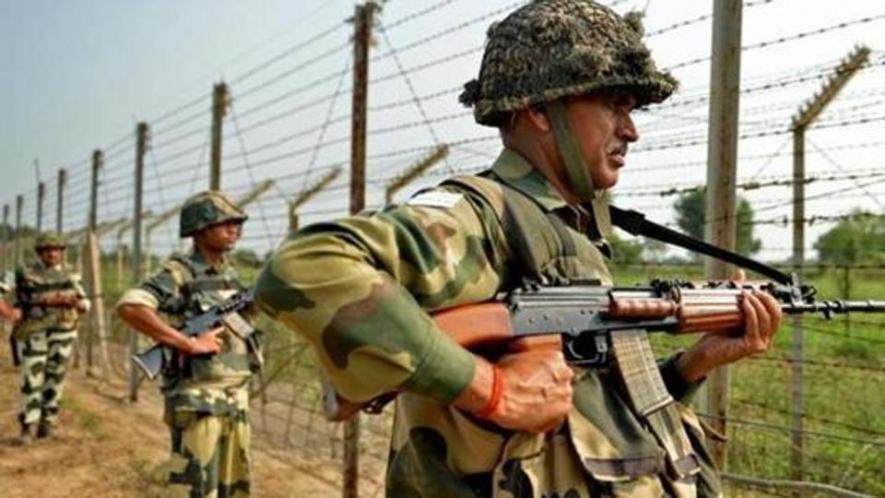
Image for representational use only. Image Courtesy: Hindustan Times
Sushma Swaraj, Foreign Minister of the “nationalist” Bharatiya Janata Party (BJP) government, has claimed that the Balakot air strike on February 26,was not meant to kill Pakistani civilians or combatants. This statement should have laid to rest the unnecessary controversy triggered by BJP loudmouths and spinners of tall tales who hyped up every aspect of the strike, unmindful of the facts. Much has been made of the use of air power, as opposed to land forces, suggesting that India has discarded its policy of restraint and is prepared to take the escalatory path from now on.
An analysis of what transpired on February 26 and 27 shows that whatever India gained on February 26, by entering Pakistani air space and firing bombs on the so-called Jaish-e-Mohammed seminary, was neutralised the very next day by Pakistan Air Force (PAF) returning the favour -- they shot down an Indian MIG 21 and captured an Indian pilot. The same day and around the same time as PAF entered Indian air space, India lost a helicopter along with its air crew in Srinagar in a ‘friendly fire’.
Having taken this strategic course, Indian policymakers will be hard-pressed to escape its constricting consequence. Because, any escalation will carry the risk of making outside powers intervene and put pressure on both sides. Which means restricting India’s strategic autonomy and independent foreign policy. The most recent example is the UN Security Council listing Masood Azhar as a global terrorist at the same time that US made India surrender to its diktat to halt all oil imports from Iran and instead buy from US and others, that too at a higher cost.
It is being claimed that the listing of Azhar will help in getting Pakistan black-listed by the Financial Action Task Force. But it is more likely that because of UNSC listing of Azhar and its compliance by Pakistan, the country has a better chance of escaping this (black-listing). If despite this many Indians are beating their chests and want more of the same, if not worse, it only shows that war-mongering is the most effective way to divert attention from everything else, as also pass off short-term self-interest as the “nation’s interest”.
Those sold on the idea of India throwing its weight around to get its way presumably feel elated that India has emerged, as per a report by the Stockholm International Peace Research Institute, as the fourth largest military spender, while quite remarkably, India has slumped to 140 out of 180 countries in the global press freedom ranking. There is a close link between exaggerated insecurity and curbs on our constitutional freedom. Remember what the Union Home Minister said on the sedition law when he said instead of repeal, his government would, if voted to power, make it more stringent.
Besides, a closer look reveals that in real terms our country remains a small power with big ambitions. We remain pre-occupied in internal wars which have persisted for decades in “disturbed areas” and where more than one-third of the Indian army and 80% central paramilitary forces remain engaged in carrying out operations. What this means is that a very large part of our scarce resources allocated for the military (armed forces, which includes central paramilitary formations) is diverted to fighting such wars against our own people. It is this which is the single biggest source of a bloated and over-manned military, and its inability to provide resources for preparing for external threats.
It’s worth remembering that while soldiers are held out as role models and their valour gets appropriated by the ruling party, in reality they carry out a thankless job which is reflected in the fact that more soldiers die due to depression, malaria and dengue, suicide and heart attacks than in combats. As per a recent Home Ministry release, 1,294 Central Reserve Police Force (CRPF) jawans died between January 1, 2016 to July 30, 2018, against 85 killed by Left-wing guerillas in the same period. Social media is replete with instances of soldiers sharing their miserable work conditions. Tej Bahadur Yadav (Border Security Force) is one among many.
Quite apart from disdain for soldiers, is the fact that all this diversion of human and material resources also eats into funds meant for civil policing, where as much as 5.6 lakh posts are lying vacant. Normal law and order has been the biggest casualty of this obsession with a strong-arm approach to suppress movements whose roots lie in material conditions of existence and/or historical wrongs. Indeed, most such movements began in the form of peaceful agitations and it’s only when they found no political solution that they graduate to militancy. From an Adivasi facing displacement and loss of rights over forest land, to the unresolved Kashmir dispute, to endless negotiations with Naga groups are evidence that the tried and failed policy of military suppression has to be discarded in favour of a peaceful, democratic resolution.
Instead, we have weakened ourselves by pursuing a coercive approach, thereby prolonging conflicts for decades, which extract a very high price.
What makes this sad reality sadder is the fact that while India spent $66.5 billion in 2018 compared with $649 billion spent by the US, $250 billion by China and $67.8 billion by Saudi Arabia, its count of diplomats is very low. To measure power only in terms of military might is fallacious. A people assured of their life and liberty makes the country stronger and enhances its ability to use diplomats to good effect. In big power politics, even coercive diplomacy requires a robust diplomatic corp to play the most critical role. Here India falls far short. In contrast to the US boasting of 14,000 plus diplomats and China having 7,500 diplomats, India has just 940.
What makes the situation worse is the fact that power is highly concentrated in India within the Prime Minister’s Office (PMO). The absence of a healthy debate in public multiplies the problem created by this concentration of power. More or less, all ministries/ departments are virtually run by the PMO with its more than 230 joint secretary-level officers. We saw this in the Rafale scam, where PMO was reportedly running parallel negotiations with France’s Dassault company, undercutting the official negotiating team appointed by the Ministry of Defence. The same goes for foreign affairs where the PM has been calling the shots although there is a Union Minister assisted by two junior ministers.
Ironically, a “strong” leader is actually weak because concentration of decision-making with a coterie means that the leader cannot countenance anyone performing better than the leader. Indeed, such a person is seen as a challenger. So, there is a preference for flunkeys. By side-lining other centres of legitimate power -- the council of ministers -- the “strong” leader demonstrates that he/she alone can take decisions. The sorry plight of India’s foreign minister speaking about India never accepting unilateral sanctions when the real power wielder buckled to US diktat, illustrates that this problem runs deep in our country.
Get the latest reports & analysis with people's perspective on Protests, movements & deep analytical videos, discussions of the current affairs in your Telegram app. Subscribe to NewsClick's Telegram channel & get Real-Time updates on stories, as they get published on our website.









